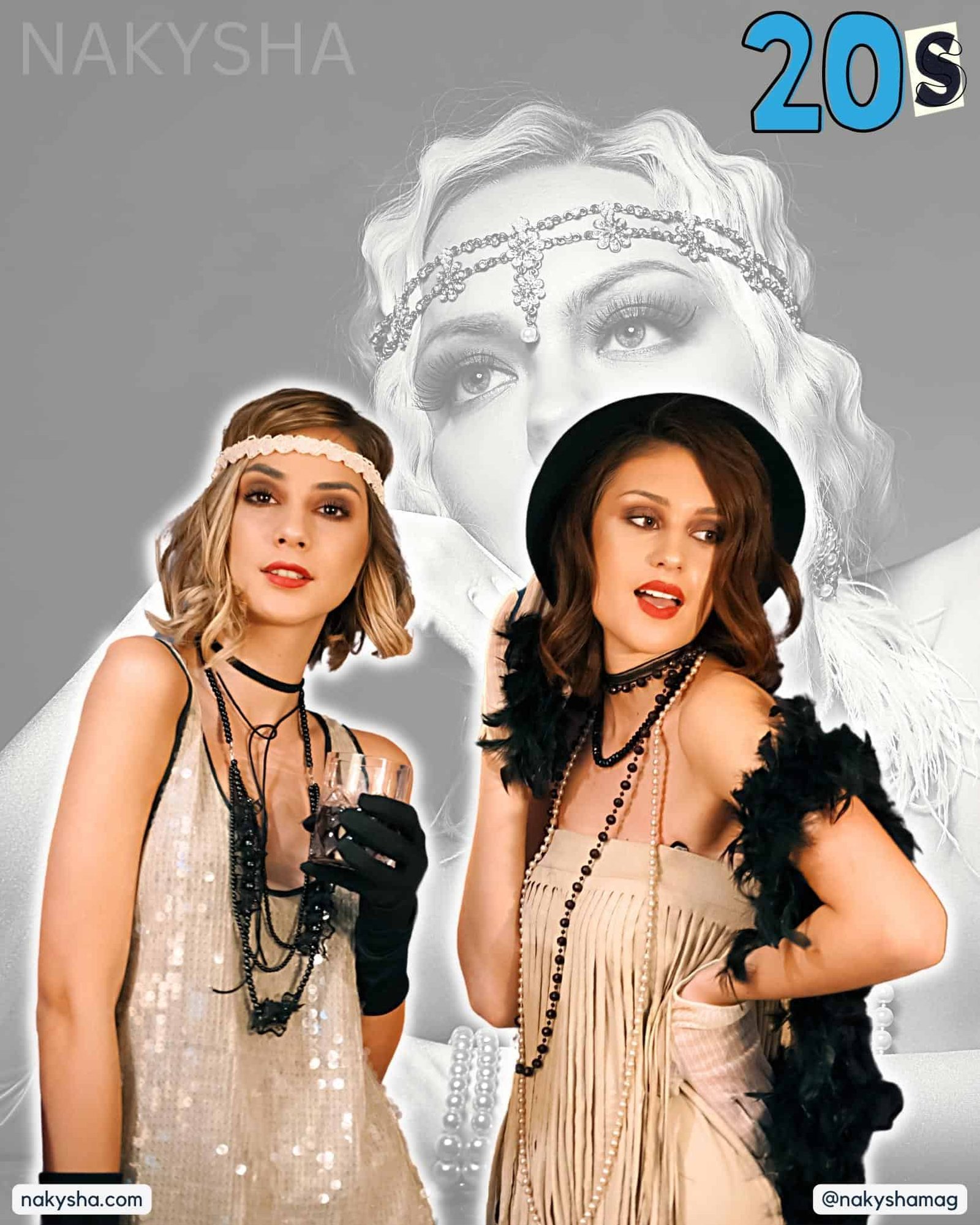My Grandma always talks about 20s fashion as fashion was significant during the 1920s, marking a significant shift in social and cultural values. The First World War ended, and women’s societal roles changed rapidly.
The 1920s saw women gaining more independence and freedom, and fashion played a significant role in reflecting this change. The time’s fashion was characterized by a rejection of traditional gender roles and an embrace of new styles that emphasized comfort, movement, and freedom.
For women, this meant shedding restrictive corsets and wearing looser, more comfortable clothing, such as Flapper-style dresses. Fashion was also a way for women to express themselves and showcase their individuality when social norms were challenged.
As such, fashion was a way to look good, communicate a message, and be part of a more significant cultural movement. This article will provide an overview of everything related to the 1920s fashion style, its evolution, and its impact on modern fashion.
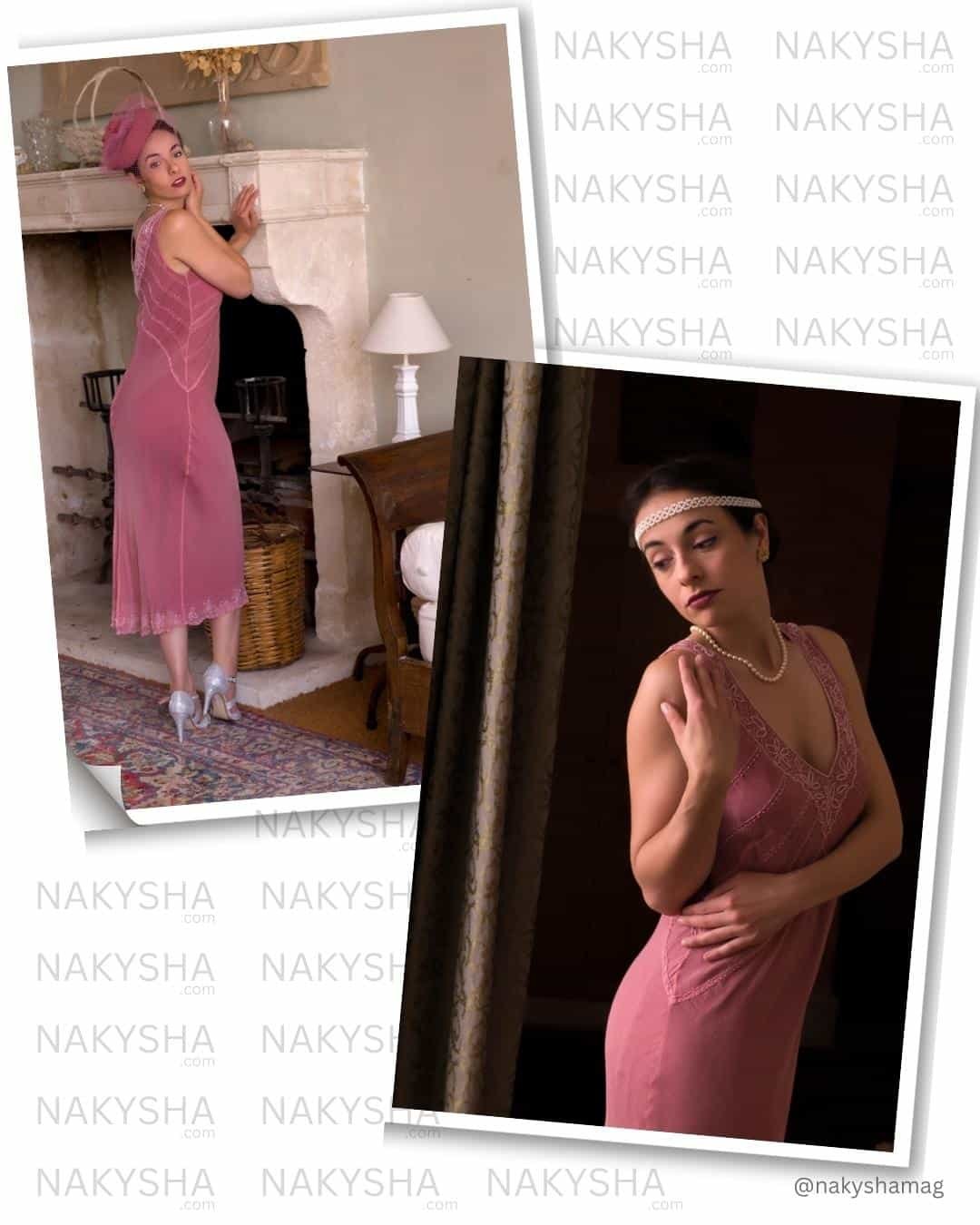
Overview of 20s Fashion Trends
The 1920s, also known as the “Roaring Twenties,” was a decade of social and cultural change, reflected in its fashion trends. Women’s fashion became more liberating, with shorter hemlines, looser fits, and a more androgynous style.
The iconic Flapper dress symbolized the era with its beaded fringes and dropped waistline. Men’s fashion also saw changes, with the popularity of the double-breasted suit and fedora hat.
Art Deco designs influenced fashion, with geometric patterns and bold colors prevalent in clothing and accessories. Jazz music and dance also played a significant role in fashion, with dresses allowing movement and expression.
1920s fashion represented a departure from the past’s more formal and restrictive styles, embracing a more relaxed and modern approach to dress.
What are the Popular Types of 20s Fashion Styles?
The 1920s saw the emergence of several popular fashion styles, each with its distinct characteristics.
The Flapper Style: This style is perhaps the most iconic of the era. The Flapper dress, characterized by its dropped waistline, beaded fringes, and loose fit, was designed to allow freedom of movement and expression.
Art Deco Style: This style was characterized by bold geometric patterns, sharp lines, and bold colors. It was popular in clothing and accessories and reflected the emerging Art Deco movement in architecture and design.
Androgynous Style: Women’s fashion in the 1920s was characterized by a more masculine look, with shorter haircuts, boxy jackets, and trousers becoming more popular. This style allowed women to break free from traditional gender roles and embrace a more accessible way of life.
Sportswear Style: This style was influenced by the popularity of sports and outdoor activities. It featured comfortable, practical clothing made from breathable fabrics, such as cotton and linen.
Hollywood Glamour Style: This style was characterized by luxurious fabrics, such as silk and velvet, and elaborate embellishments, such as sequins and beading. It was often worn by actresses and socialites attending glamorous events.
1920s fashion was diverse and reflected the changing social and cultural attitudes.
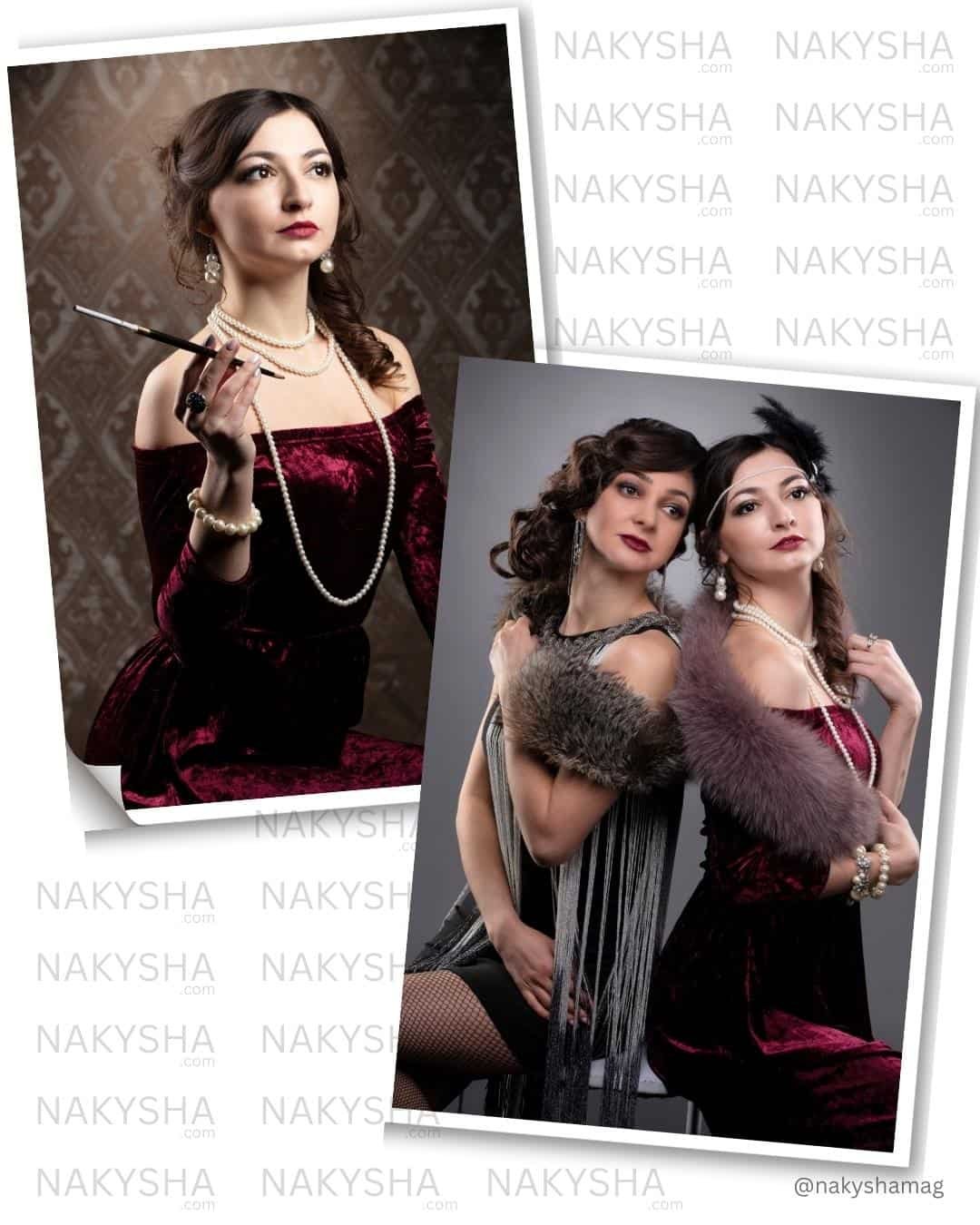
The Key Features of 20s Women’s Fashion?
Women’s fashion in the 1920s was characterized by a departure from the more traditional and restrictive styles of the past. Here are some of the key features of 1920s women’s fashion:
Shorter Hemlines: Women’s dresses and skirts became shorter, with hemlines rising above the ankle and eventually reaching the knee. This allowed for greater freedom of movement and reflected the changing attitudes toward femininity and sexuality.
The Flapper Dress: The flapper dress, loose fit, dropped waistline, and beaded fringes, became an iconic era symbol. It allowed for greater ease of movement and was often worn to dance halls and other social events.
Androgynous Style: Women’s fashion in the 1920s became more androgynous, with shorter haircuts, boxy jackets, and trousers becoming more popular. This reflected the changing gender roles and the desire for greater freedom and independence.
Art Deco Designs: Art Deco designs, characterized by bold geometric patterns, sharp lines, and bold colors, influenced clothing and accessories. This reflected the emerging Art Deco movement in architecture and design.
Accessories: Accessories played an essential role in 1920s fashion. Popular accessories included long strands of pearls, cloche hats, and T-strap shoes. These accessories added a touch of glamour and sophistication to the overall look.
1920s women’s fashion represented a departure from the past’s more restrictive and formal styles, embracing a more relaxed and modern approach to dress.
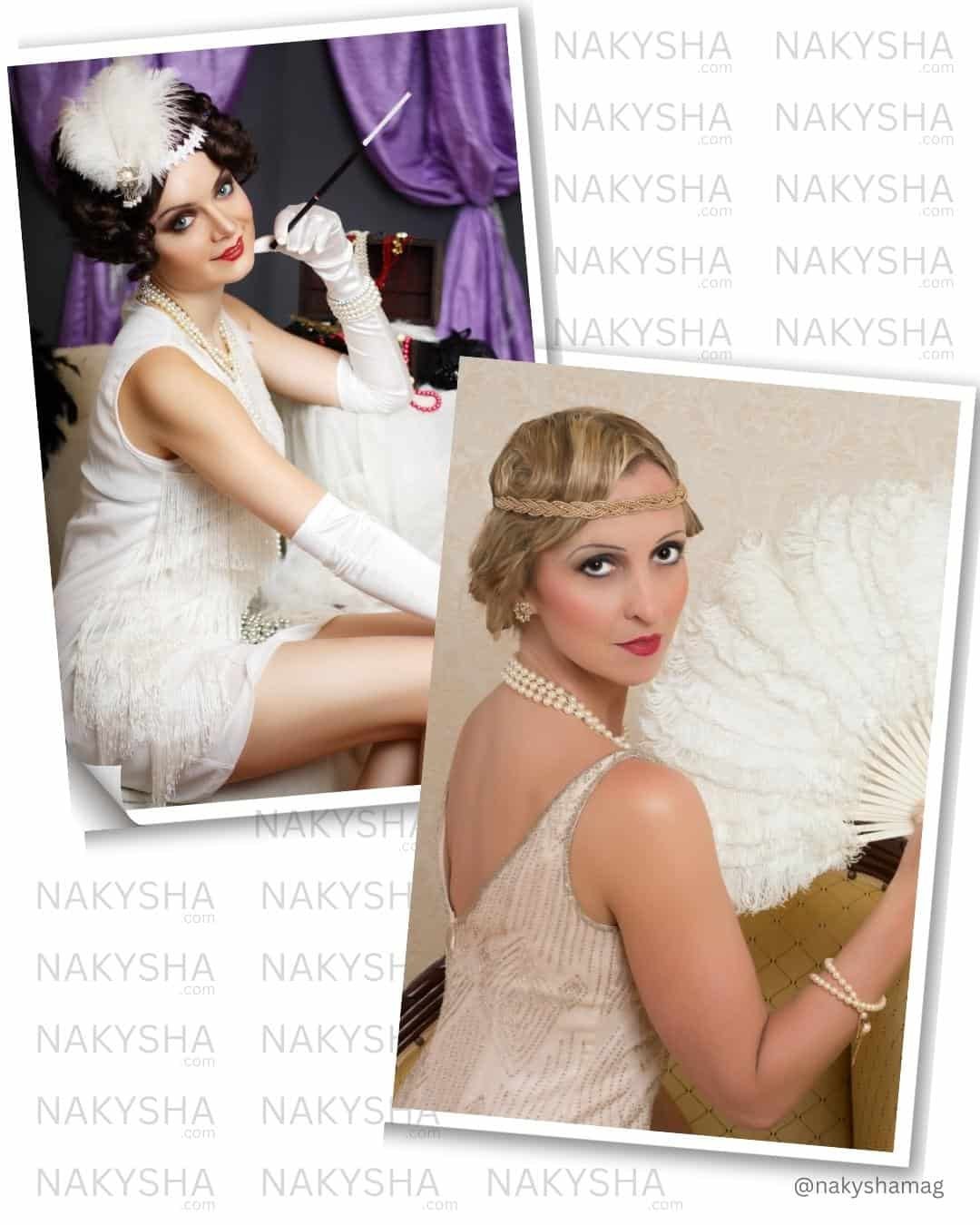
The Inspirations of Fashion Trends in the 20s
Fashion trends in the 1920s were inspired by several factors, including:
Art Deco Movement: The Art Deco movement influenced the design and aesthetics of 1920s fashion. This style was characterized by bold geometric patterns, sharp lines, and bold colors reflected in clothing and accessories.
World War I: World War I significantly impacted fashion, as practical and functional clothing became more popular. The war also led to a shortage of materials, which influenced the use of simpler designs and more affordable fabrics.
Social Change: The 1920s was a period of social and cultural change, particularly in relation to women’s rights and freedoms. This led to a more relaxed and liberated approach to fashion, with shorter hemlines, looser fits, and more androgynous styles becoming more popular.
Jazz Age: The Jazz Age’s lively music and dance significantly impacted fashion trends. Clothing that allowed movement and expression became more popular, such as the iconic flapper dress.
Hollywood Glamour: The emergence of Hollywood in the 1920s also impacted fashion trends, particularly in relation to evening wear. Hollywood actresses like Greta Garbo and Clara Bow influenced fashion with glamorous and luxurious styles.
Fashion trends in the 1920s were influenced by a combination of social, cultural, and artistic factors, reflecting the changing attitudes and values of the time.
Famous Fashion Designers in the 20s
Several famous fashion designers emerged during the 1920s, including:
- Coco Chanel: Coco Chanel is perhaps the most famous fashion designer of the era. She was known for her simple and elegant designs, emphasizing comfort and practicality. Chanel popularized the “little black dress” and introduced jersey fabric in women’s clothing.
- Jean Patou: Jean Patou was a French designer known for his sportswear designs, inspired by the popularity of outdoor activities in the 1920s. Simple lines and luxurious fabrics characterized Patou’s designs.
- Elsa Schiaparelli: Elsa Schiaparelli was an Italian designer known for her bold and unconventional designs. She was influenced by the Surrealist movement and introduced unique elements, such as insect motifs and zippers, into her designs.
- Paul Poiret: Paul Poiret was a French designer known for his dramatic and exotic designs. He introduced the “harem” pants and the “lampshade” tunic, and his designs often featured bold colors and intricate embellishments.
- Madeleine Vionnet: Madeleine Vionnet was a French designer known for her innovative use of bias-cut fabric, which allowed for a more excellent range of movement and fit. She was also known for her elegant and timeless designs, emphasizing simplicity and quality craftsmanship.
These designers were influential in shaping the fashion trends of the 1920s, and their legacies continue to be felt in the fashion industry today.
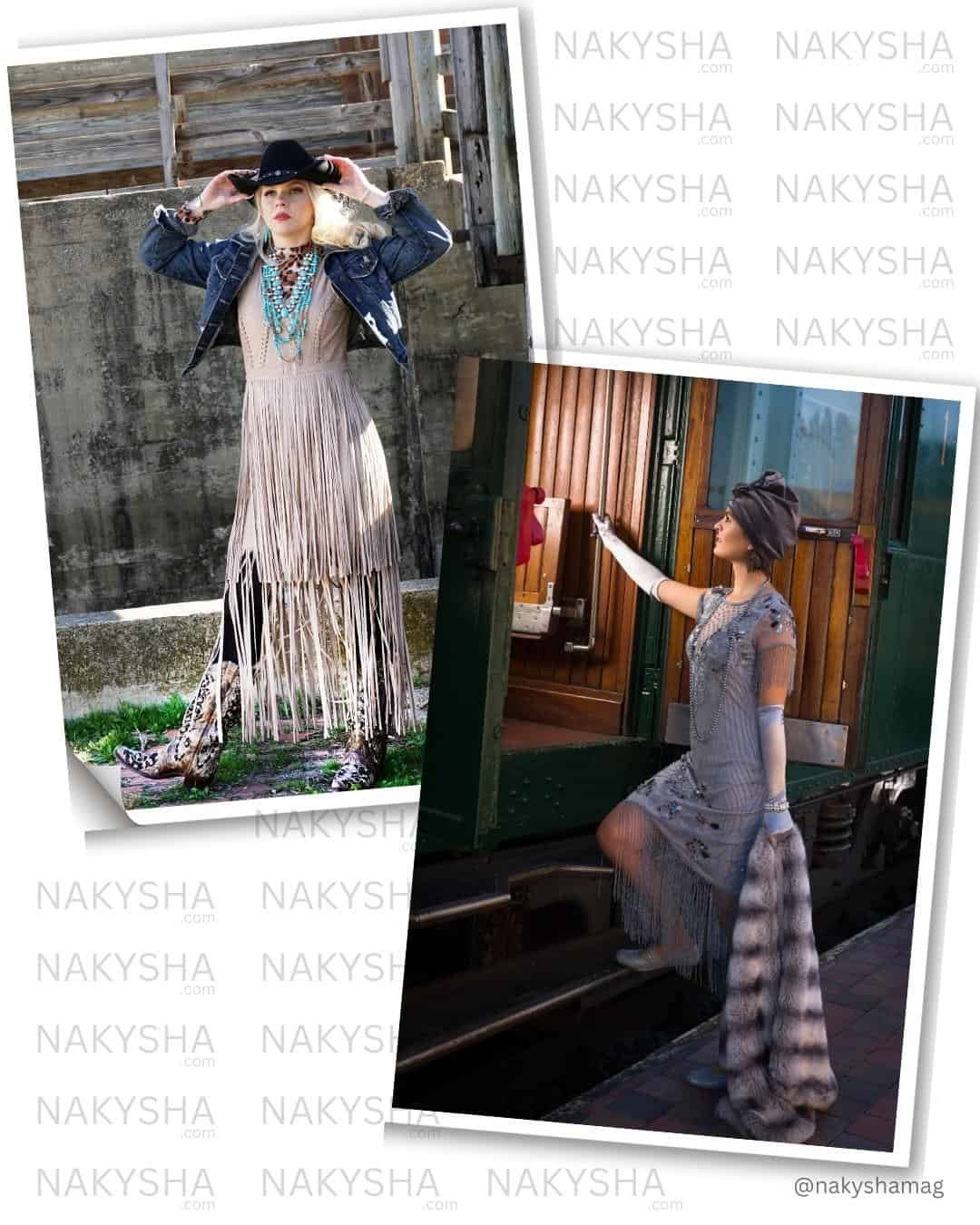
How to Incorporate 20s Style into Modern Fashion?
Incorporating 1920s fashion into modern fashion can be a fun and creative way to add a vintage flair to your wardrobe. Here are some ways to do it:
Flapper-inspired Dresses: Flapper dresses with their loose, straight silhouette, dropped waistline and fringed or beaded embellishments can be a great way to add some 1920s style to your wardrobe. To add a contemporary touch, you can pair them with modern accessories, such as a statement necklace or strappy heels.
Art Deco-inspired Jewelry: Art Deco designs are a hallmark of 1920s fashion and can be incorporated into your modern wardrobe through jewelry. Look for pieces with geometric shapes, bold colors, and intricate details, such as a statement necklace, a pair of earrings, or a bracelet.
Cloche Hats: The cloche hat was a popular accessory in the 1920s and can be a stylish addition to your modern wardrobe. For a unique and fashionable look, you can wear it with a modern outfit, such as a denim jacket and skinny jeans.
T-strap Shoes: T-strap shoes were popular in the 1920s and can be incorporated into your modern wardrobe. They pair well with various outfits, from jeans to dresses, and add a vintage touch to your look.
Androgynous Silhouettes: Androgynous silhouettes were a hallmark of 1920s fashion. You can incorporate them into your modern wardrobe by pairing loose-fitting trousers with a fitted top or a boxy blazer with a pencil skirt. This will create a unique and contemporary twist on a classic style.
Incorporating 1920s fashion into your modern wardrobe can be a great way to express your style and add a touch of vintage glamour to your look.
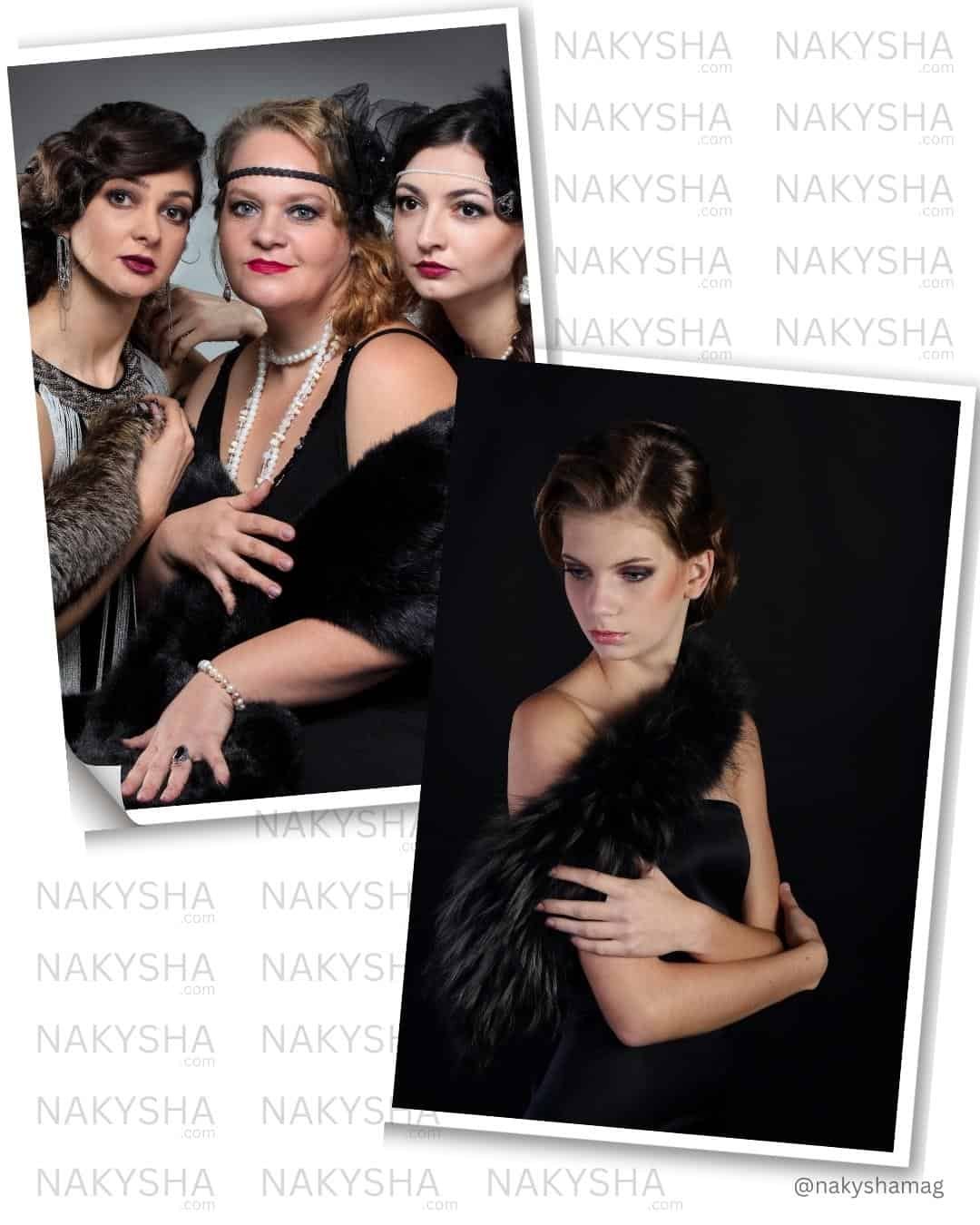
Tips for Blending 20s Fashion Elements into Modern Outfits
Blending 1920s fashion elements into modern outfits can be a fun and creative way to add a vintage touch to your wardrobe. Here are some tips to help you do it effectively:
Start Small: If you’re new to incorporating vintage fashion into your wardrobe, start with small touches, such as accessories or jewelry, before moving on to larger pieces like dresses or coats.
Mix and Match: Mix and match vintage and modern pieces to create a unique look. For example, pair a vintage beaded cardigan with a pencil skirt or wear a stylish blazer with a vintage silk scarf.
Focus on One Element: If you want to make a statement with your vintage piece, focus on one outfit element, such as your dress or shoes. Keep the rest of your outfit simple and modern to make your vintage piece stand out.
Choose Modern Fabrics: If you’re incorporating vintage elements into your outfit, choose modern fabrics similar to those used in the 1920s. For example, silk, satin, and velvet were popular in the 1920s, but you can find modern versions of these fabrics that will look great in a contemporary outfit.
Don’t Be Afraid to Experiment: The great thing about incorporating vintage fashion into your outfit is that there are no hard and fast rules. Don’t be afraid to experiment and try new things to create a unique and stylish look.
Incorporating 1920s fashion elements into modern outfits can be a great way to express your style and add a touch of vintage glamour to your wardrobe. With these tips, you can create a fashionable and modern look incorporating the best of both worlds.
Hair Styles in 20s Fashion
The 1920s were known for their unique and glamorous hairstyles that were influenced by the flapper culture and the emergence of the film industry. Here are some of the most popular hairstyles of the era:
- The Bob: The Bob was a popular hairstyle in the 1920s worn by women of all ages. It was characterized by its straight, chin-length cut and blunt bangs. The bob symbolized freedom and independence for women, and it became a popular hairstyle for flappers.
- The Shingle: The shingle was a variation of the bob, where the hair was cut shorter at the back and sides and longer at the front. This style, also known as the Eton crop, was popularized by actress Josephine Baker.
- Finger Waves: Finger waves were a popular hairstyle in the 1920s, characterized by sleek, sculpted waves. This hairstyle was often worn by actresses and was popularized by stars like Clara Bow.
- Marcel Waves: Marcel waves were another popular hairstyle in the 1920s, characterized by deep, defined waves. This style was achieved using a heated curling iron and was popular among women of all ages.
- The Chignon: The chignon was a popular updo hairstyle in the 1920s worn by women for formal occasions. It involved twisting the hair into a knot at the back of the head and securing it with pins.
These iconic hairstyles of the 1920s continue to inspire modern fashion trends today and are a great way to add a vintage touch to your look.
Makeups for 20s Style
Makeup played a significant role in 1920s fashion, characterized by bold, daring looks that reflected the era’s liberated spirit. Here are some of the most popular makeup trends of the 1920s:
- Dark Lips: Dark, bold lips were a hallmark of 1920s makeup, and shades like plum, red, and maroon were popular. Women often use lipsticks darker than their natural lip color and apply them in a distinctive Cupid’s bow shape.
- Smoky Eyes: Smoky, dramatic eye makeup was popular in the 1920s. The look was achieved using dark eyeshadows, kohl liners, and mascara to create a dramatic, sultry effect.
- Thin Eyebrows: In the 1920s, women would often shave or pluck their eyebrows to create a thin, arched shape that was popular at the time.
- Dramatic Blush: Women in the 1920s would use blush to create a dramatic, sculpted effect on their cheeks. The blush was applied in a distinctive crescent shape, high on the cheekbones.
- Powdered Skin: Pale, powdered skin was fashionable in the 1920s, and women often used face powders to achieve a smooth, matte finish. The powder would be applied liberally, often with a puff, to create a flawless complexion.
The makeup of the 1920s was characterized by bold, daring looks that were a reflection of the era’s spirit of liberation and self-expression. Incorporating these vintage makeup trends into your modern look can be a fun and creative way to add a touch of vintage glamour to your style.
Accessorizing for 20s Style
The 1920s, also known as the “Roaring Twenties,” were a time of great social and cultural change, particularly in fashion. Accessorizing was an essential part of the overall look during this time, and some of the most common accessories for 20s fashion style included:
- Cloche hats: These close-fitting hats were trendy and often worn at a tilt.
- Long pearl necklaces: Long strands of pearls were a popular accessory, often worn with flapper-style dresses.
- T-strap shoes: T-strap shoes with low heels were fashionable and comfortable.
- Headbands: Decorative headbands, often with a feather or jewel attached, were worn to add sparkle to an outfit.
- Art Deco jewelry: Jewelry with geometric shapes and bold colors, inspired by the Art Deco movement, was very popular.
- Beaded bags: Small, intricately beaded bags were a must-have accessory for any fashionable woman.
- Gloves: Elbow-length gloves were a popular accessory, particularly for evening wear.
- Scarves: Printed silk scarves were a popular accessory, often tied around the neck or over the shoulders.
- Bobbed hair: Short, bobbed haircuts were in fashion during the 1920s, and women often added decorative hair accessories such as hair combs or clips.
20s fashion was characterized by its glamour, boldness, and rebellion against traditional styles, and these accessories played a big part in achieving the desired look.

